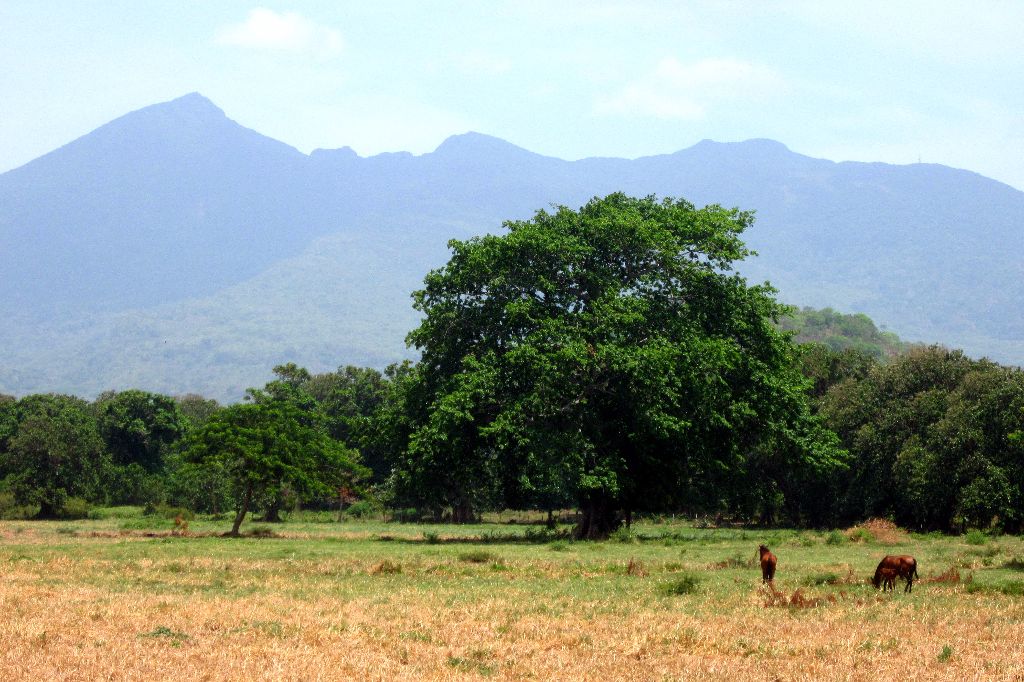Nicaragua: León to Granada
First impressions of Nicaragua, driving to León from the border are that it is more arid than the lush El Salvador we left behind. More cattle grazing in wide open spaces. More farming, oxen plowing and trotting their owners in carts down main street. Bicycles. Lots and lots of bicycles as a means of transportation. Kids of various ages are all in school uniforms. From teenagers to cute little ones with reading glasses. It’s quite uplifting to see.
Arrival in León and the air is hot hot hot. 85F/29C at 8am and highs of 99F/37C expected. Only about 60% humidity. We live and die by the fans. One of the first nights, Travis made an amateur mistake by choosing to make a hot stew for supper. As we sat down to the table with the family we are staying with and the two longer-term American students living upstairs, we are the only two visibly dripping with sweat as we sit unmoving, eating our hot stew! I can’t remember what everyone else was eating, but I know steam wasn’t rising from it!
León has several large and highly-regarded Universities. The Parque Centrale is close to campus and you can see the impact the students have on the population. Cafés are full of studious-looking 20 somethings, and there are many bars to choose from when the sun goes down. Our hosts, the Tellez family have a daughter in Architecture at a private university, where the family pays $150USD/month for tuition, plus extra for books, etc. Their son is going into Medicine at the free (state-funded), public University that has about 15,000 students.
Below, a mural depicting a massacre of civilians that says “Por La Libertad Hemos Luchado y Hoy Juramos Defenderla”, which means “For Liberty We Have Fought & Today We Promise to Defend It”.
Nicaragua is yet another Central American country with a messy history that has been heavily influenced (in a bad way) by US involvement. A super-summarized version of the country’s 20th century history is that US Marines occupied Nicaragua from 1912 to 1933, then power was handed over to a string of dictators that lasted until 1979. A revolution ensued in the 80’s where the Sandinistas took power; their policies advocating social democracy and a mixed economy. At the same time, there was a group of rebels in Nicaragua called the Contras, who opposed the new Sandinista government. Despite the fact that the Sandinista revolution was cemented with a democratic election, the US proceeded to support the Contra rebels big time with weapons, food, and training. The Contras were real baddies and loved to destroy hospitals and schools. They committed widespread kidnappings, murder, and rape. Thankfully, democracy persevered, US funding stopped and things have been relatively stable and peaceful since 1990.

After three nights indoors, we thrust ourselves out camping for the next few. Parque Nacional Volcan Masaya hosts two volcano peaks, side by side. Volcan Masaya itself is inactive, the crater filled in with various shades of green vegetation. The active crater of neighboring Volcan Nindiri can be seen below on the left by a puff of white smoke.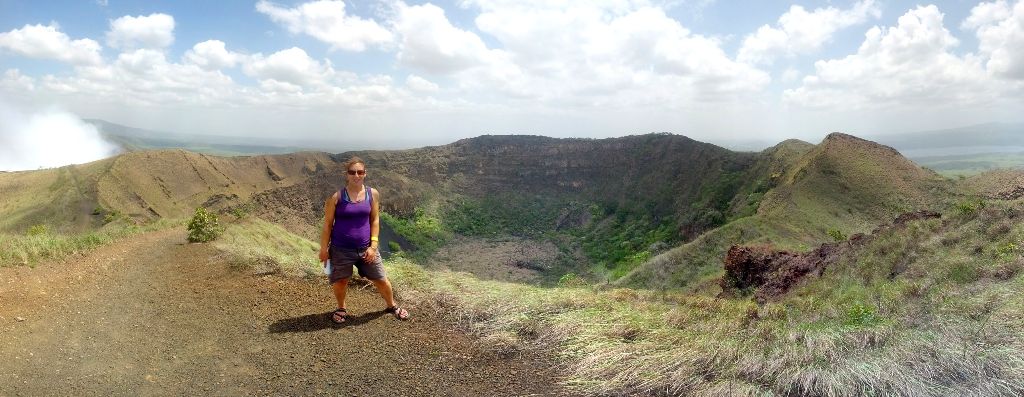
Walking the peaceful trail along the inactive crater ridge.
But over at the other peak…

The Santiago crater of Volcan Nindiri is highly active, as you can see, last erupting ash and steam in 2008. They tell you not to spend too long by the edge, but there’s no one policing this. The gases are thick with toxic sulfur dioxide, irritating your throat and lungs when the wind turns. OSHA would not approve of this operation. You pick your trails carefully and scurry like a Travis-crab when you think the wind is about to turn. Amazingly, there is a huge colony of parrots that nest in the active crater. They lay 2-4 eggs in the walls and after about 3 months, leave their toxic home for the first time. You can hear them squawking up at the crater in the early morning and when they settle in for the night.
Our camping spot for the night at the base of the volcano.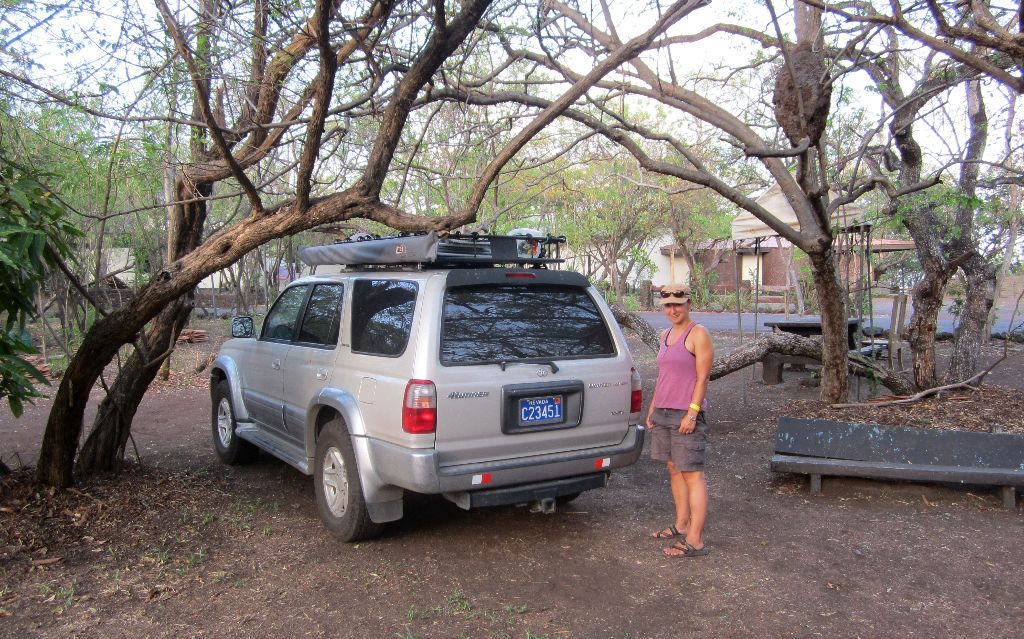
What looks like a large hive over Amanda’s left shoulder is really a bird’s nest made from mud and twigs. We must have parked too close because I don’t think the birds came back that night. Strange new birds, and strange new bugs! We are starting to notice more drastic changes in flora and fauna as we approach the biodiverse mecca that is Costa Rica.
Our next camp spot is literally, a 20 minute drive away. Laguna de Apoyo is a large crater lake that you descend into and the rest of the world disappears.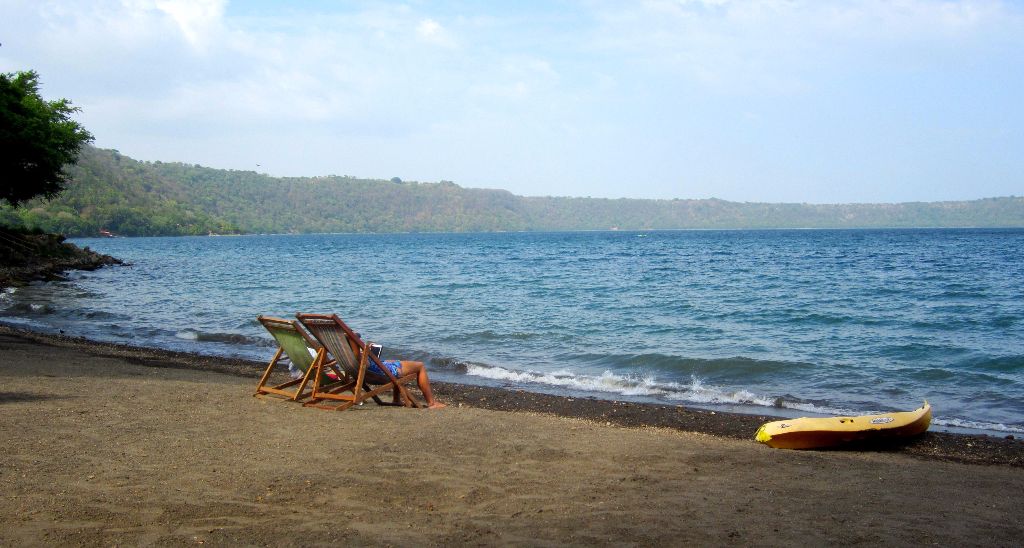
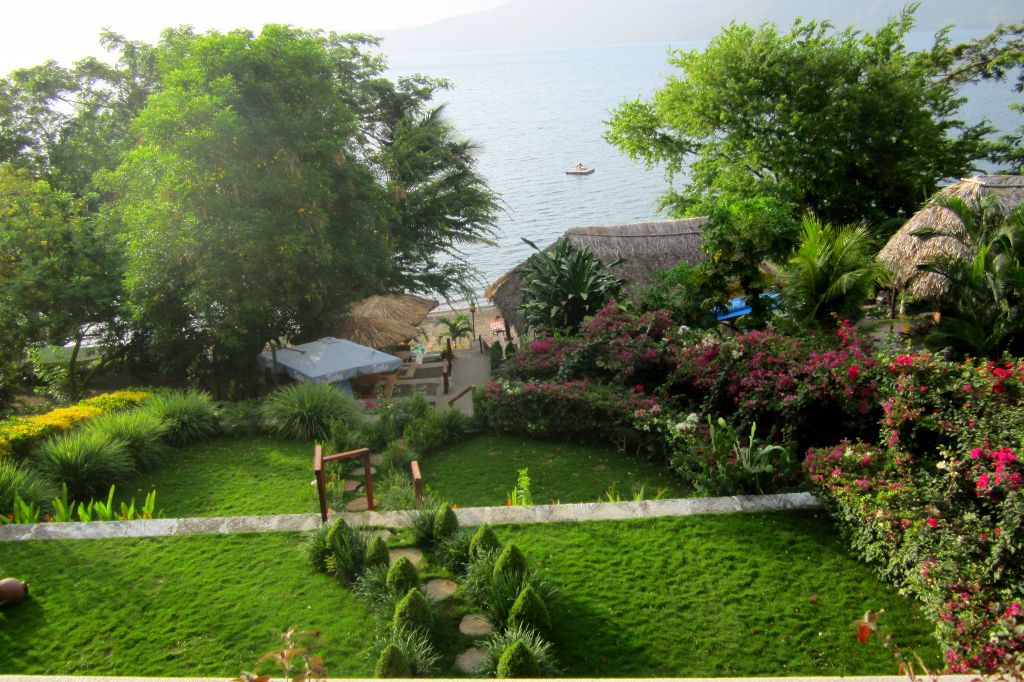
Hostel Paradiso has a pretty great set-up for tent camping or parking in their lot. The air is hot with a forgiving breeze, the drinks are cheap and the cats are plentiful.
Next stop is the colonial city of Granada that was founded by the Spanish in 1524. Unlike Antigua in Guatemala, which has had most of it’s wonderful old buildings destroyed or crippled by constant earthquakes, a lot of the historic buildings in Granada have been preserved for our viewing pleasure. Hurray!
Like León, it was fairly hot in Granada and even though we were in the city, the mosquitoes were back with a vengeance. Having a fan and mosquito net in our room was essential. We also had the pleasure of experiencing our first electrical blackout in Nicaragua. Little did we know, the first of many to come!
A chef’s duty never wanes: chopping onions by candlelight and headlamp.
Granada is at the north end of the massive Lago Nicaragua. There is a boardwalk where passenger ferries dock and a walkway along the lake with playgrounds for kids, but it all just seemed empty. Our Airbnb host advised us against swimming and upon arrival at the lakefront it became obvious. All of the waste from the city of Granada flows out to the lake, which makes the lakefront trash-ridden and unswimmable.
Next post will tell the story of how Bruno walks on water – yes, Bruno gets to ride a ferry – to the dual volcano island of Ometepe!!

